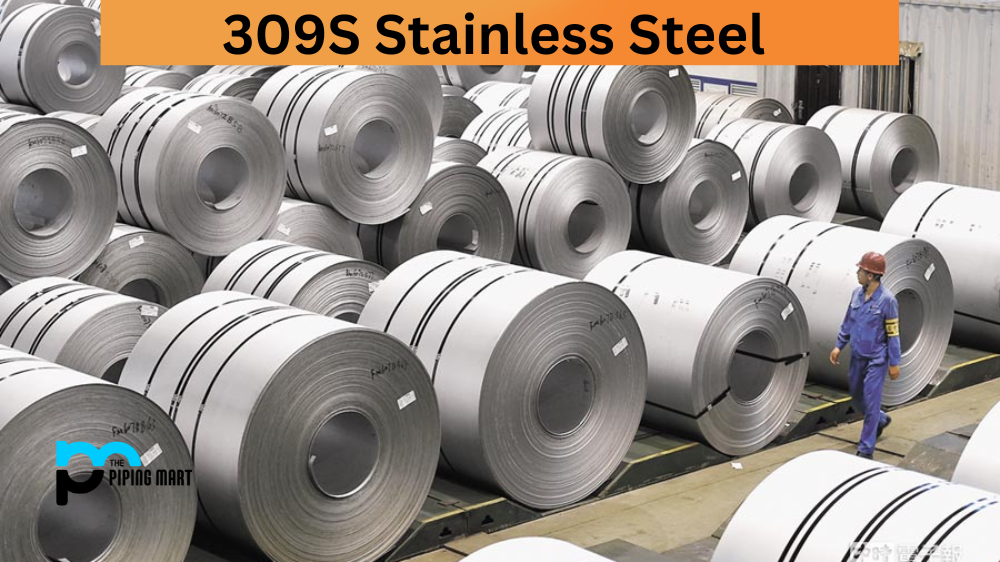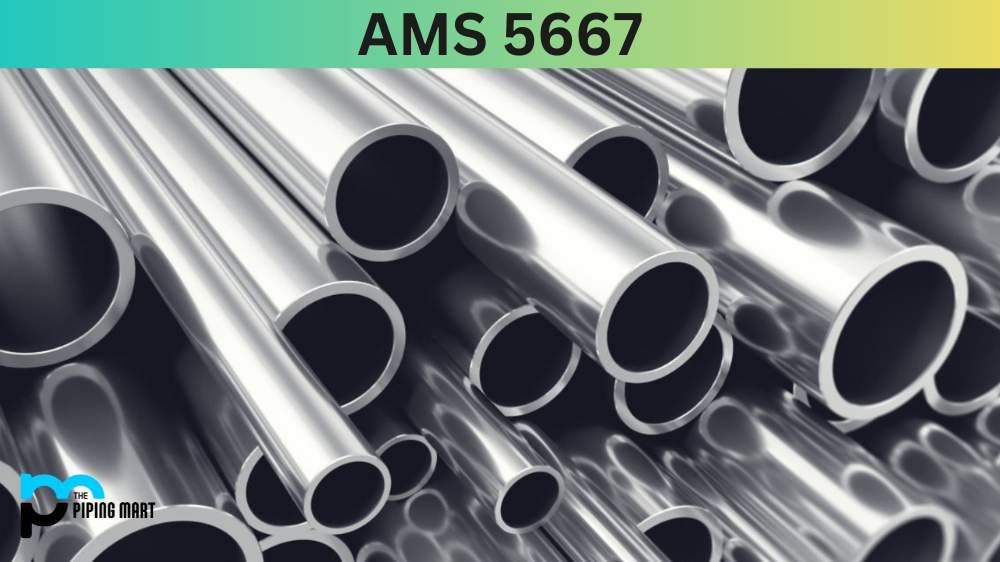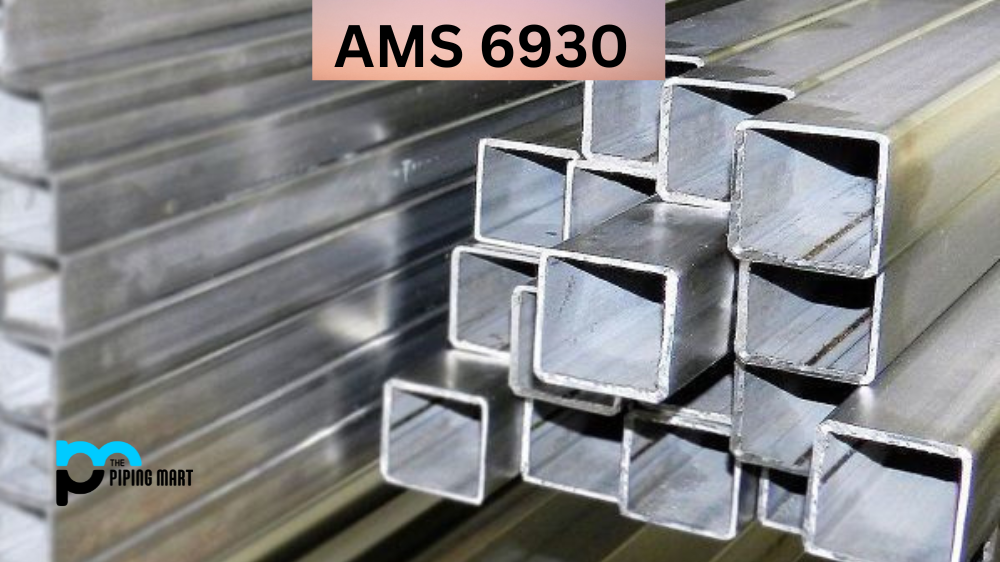309S stainless steel is a high-grade stainless steel alloy that has impressive properties, such as corrosion resistance and heat resistance. This makes it a great choice for many industrial applications. In this blog post, we will discuss the composition, chemical properties, physical properties, and uses of 309S stainless steel. We will also go over its corrosion and heat resistance, heat treatment, machining, and welding.
309S Stainless Steel Composition
UNS S30900 is composed of around 24-26% chromium and 12-15% nickel. It contains some other elements such as manganese, silicon, phosphorus, sulfur, carbon, nitrogen and more which are usually in trace amounts (less than 1%). The combination of these elements provides the alloy with impressive chemical properties such as good formability and weldability. Additionally, 309S stainless steel has excellent corrosion resistance due to its high chromium content.
| Element | Content (%) |
|---|---|
| Iron, Fe | 60 |
| Chromium, Cr | 23 |
| Nickel, Ni | 14 |
| Manganese, Mn | 2 |
| Silicon, Si | 1 |
| Carbon, C | 0.20 |
| Phosphorous, P | 0.045 |
| Sulfur, S | 0.030 |
309S Stainless Steel Chemical Properties
SS It is a common material used in many applications due to its durable and corrosion-resistant properties. In particular, 309S stainless steel stands out amongst other stainless steel due to its unique chemical properties. It contains a highly beneficial combination of chromium and nickel, making it impact-resistant, heat-resistant, and also highly resistant to oxidation at high temperatures. This allows for it to be used in various industrial settings where environments are harsh or intense; for example, boiler parts and flue gas desulfurization systems primarily utilize this type of steel. Further features such as controlled carbon content enable 309S stainless steel to meet the specific needs of many industries throughout the world. Overall, 309S stainless steel is an excellent choice for any application that needs reliable strength while withstanding tough environmental conditions.
309S Stainless Steel Mechanical Properties
UNS S30900 is widely used in industrial applications due to its high mechanical properties. It has excellent corrosion resistance and can withstand temperatures up to 1600°F (871°C). Additionally, it has a good creep and stress-rupture strength, as well as a tensile strength of 73 ksi (505 MPa) and a yield strength of 29 ksi (200 MPa). This makes 309S stainless steel an ideal choice for industries such as cryogenic, automotive, food processing, pulp & paper, and heat treatment. Its ductility allows it to be machined easily and form into various shapes. For example, it is frequently used in process equipment which requires heavy pressure or vacuums. Therefore, if you are looking for a metal with exceptional mechanical properties that can perform consistently in the toughest of environments, then 309S stainless steel is a perfect choice!
| Properties | Metric | Imperial |
|---|---|---|
| Tensile strength | 620 MPa | 89900 psi |
| Yield strength (@ strain 0.200%) | 310 MPa | 45000 psi |
| Izod impact | 120 – 165 J | 88.5 – 122 ft-lb |
| Shear modulus (typical for steel) | 77 GPa | 11200 ksi |
| Elastic modulus | 200 GPa | 29008 ksi |
| Poisson’s ratio | 0.27-0.30 | 0.27-0.30 |
| Elongation at break (in 50 mm) | 45% | 45% |
| Hardness, Brinell | 147 | 147 |
| Hardness, Rockwell B | 85 | 85 |
| Hardness, Vickers (converted from Rockwell B hardness) | 169 | 169 |
309S Stainless Steel Physical Properties
UNS S30900 is a ferritic steel with good ductility and formability. It has excellent mechanical strength, which makes it very strong in comparison to other grades of stainless steel alloys. Additionally, this grade has a low thermal expansion coefficient which helps it retain its shape under different temperatures. Moreover, the low thermal conductivity of this grade helps reduce energy costs during production processes as less heat is lost during machining or welding processes.
| Properties | Metric | Imperial |
|---|---|---|
| Density | 8 g/cm3 | 0.289 lb/in³ |
| Melting point | 1455°C | 2650°F |
309S Stainless Steel Thermal Properties
| Properties | Metric | Imperial |
|---|---|---|
| Thermal expansion co-efficient (@ 0-100°C/32-212°F) | 14.9 µm/m°C | 8.28 µin/in°F |
| Thermal conductivity (@ 0-100°C/32-212°F) | 15.6 W/mK | 108 BTU in/hr.ft².°F |
309S Stainless Steel Equivalent
| ASTM A167 | ASME SA249 | ASTM A314 | ASTM A580 |
| ASTM A249 | ASME SA312 | ASTM A358 | FED QQ-S-763 |
| ASTM A276 | ASME SA358 | ASTM A403 | FED QQ-S-766 |
| ASTM A473 | ASME SA403 | ASTM A409 | MIL-S-862 |
| ASTM A479 | ASME SA409 | ASTM A511 | SAE J405 (30309) |
| DIN 1.4828 | ASTM A312 | ASTM A554 | SAE 30309 |
309S Stainless Steel Uses
The combination of excellent chemical and physical properties makes 309S stainless steel suitable for many industrial applications such as automotive components (exhaust manifolds), architectural structures (elevators), kitchen appliances (refrigerator shelves), piping systems (water lines) etc. Additionally, its good forming ability makes it a great choice for pressure vessels and cookware items like pans or pots that require good thermal conduction but need to retain their shape after heating or cooling cycles.
Corrosion Resistance
Due to its high chromium content (24-26%), the alloy offers outstanding corrosion resistance in most environments, including those with higher levels of acidity or moisture exposure, such as seawater or salt water spray areas respectively, where other grades may not be able to resist corrosion effectively. As far as heat resistance goes, this grade can handle temperatures up to 1800°F without any adverse effects on its mechanical properties, making it ideal for applications that involve elevated temperatures, like boilers or ovens where materials need to withstand extreme conditions without compromising on performance parameters like strength or ductility.
Heat Resistance
309S stainless steel is an incredibly useful material for many industrial tasks. It has a wide range of thermodynamic stability and can even resist temperatures of up to 1000 degrees Celsius. This incredible heat resistance makes it the perfect choice for applications where extreme temps are the norm. Its features also make it strong against scales and bacterial corrosion, giving it added strength to withstand daily wear and tear in harsh environments. The 309S grade is highly sought after by those who need reliable equipment; its heat-resistant properties ensure that it remains a top choice in many industrial markets around the world.
Heat Treatment
Heat treatment is necessary when working with this grade because it helps improve its hardness while still retaining flexibility so that the material can be worked into intricate shapes without cracking under pressure from tools used during machining processes like drilling or sawing etc. After the heating process completes, quenching must take place, followed by tempering in order for desired performance characteristics to be achieved from the material before beginning machining operations on parts made out from this grade alloyed metal sheet/plate/rod etc.
Machining
Machining 309S stainless steel can be a challenging process. Due to the relatively high chromium and nickel content, the material is well known for its outstanding corrosion resistance and strength at elevated temperatures. To make machining successful, it is important to use the right cutting tools, such as carbide-tipped drills and face mills, as well as procedures that take into account shorter tool life and increased cutting forces. Additionally, establishing an optimized cutting speed, considering the correct coolant type and setting up an effective chip evacuation system will help ensure a successful machining outcome for this specific grade of stainless steel.
Welding
This grade takes well to welding processes provided that proper preheat is given prior to starting work on joining two parts together using conventional methods like MIG/TIG welding etc. It should be noted. However, that post-weld cleaning may have to take place if there are any signs of oxidation present on the surface after the completion of the welding process due to the presence of carbon in the alloy composition, which could lead to the formation of rust spots near the weld area if not removed promptly before further use begins taking place involving same part(s).
Conclusion
309s stainless steel is an incredibly versatile material due to its impressive chemical and physical properties combined with an excellent corrosion resistance rate even at higher levels of acidity exposure areas, making it suitable for many industrial applications ranging from automotive components manufacturing to kitchen appliance production, all way up until pressure vessel creation among others too numerous list here today so make sure you get right amount information before deciding which type best fits your needs going forward! Thanks for reading!

Pipingmart is a B2B portal that specializes in metal, industrial and piping items. Additionally, we share the latest information and information about materials, products and various types of grades to assist businesses that are involved in this business.




